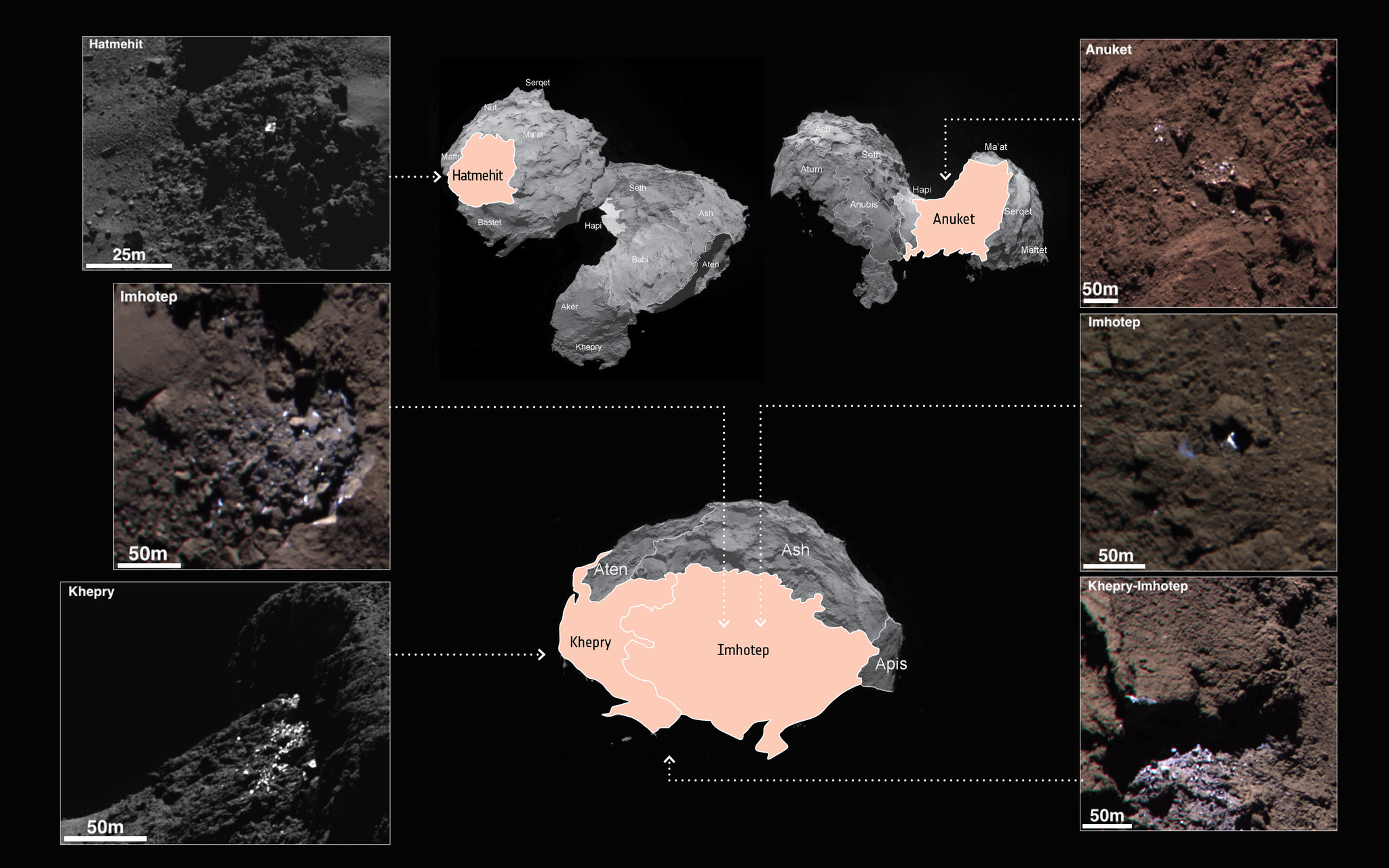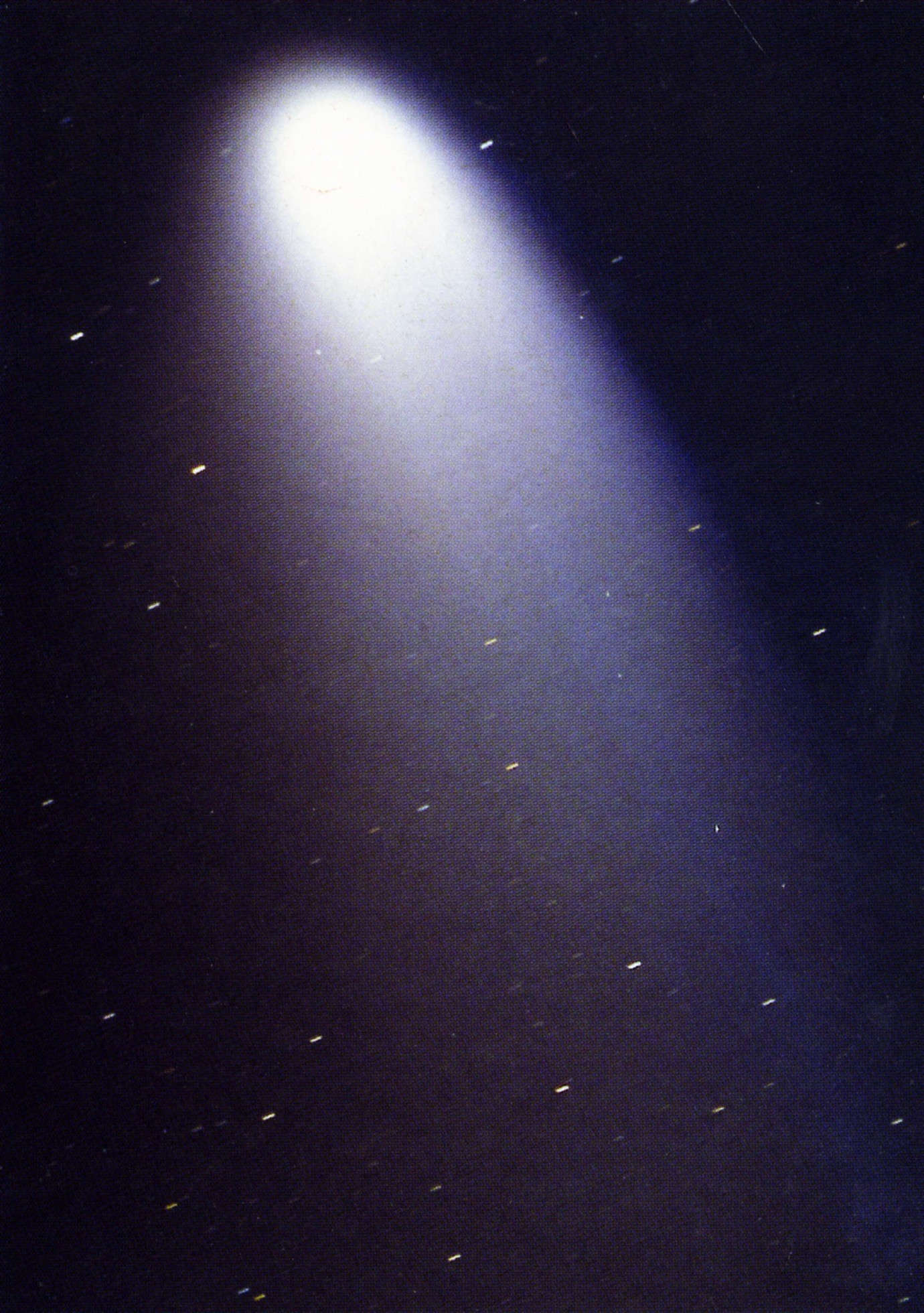Anyway, we find in all of these comets the same molecules as in the interstellar medium, confirming that their material is essentially unprocessed interstellar matter. A very surprising discovery was the presence of the oxygen molecule O2 in the ejecta of comet 67P, with a rather large abundance, about 4 percent, of water. This molecule, rare in the interstellar medium, seems to have been present at the formation of the comet, which poses still unsolved problems.
The analysis of the free dust and of the surface of the nucleus of comet 67P confirms the presence of silicates and of organic materials. These materials, as well as the parent molecules ejected by the comet, contain some of the building blocks of living molecules, including amino acids such as glycine, and it is quite possible that they were used in the creation of life on Earth when they were brought by the fall of comets.

